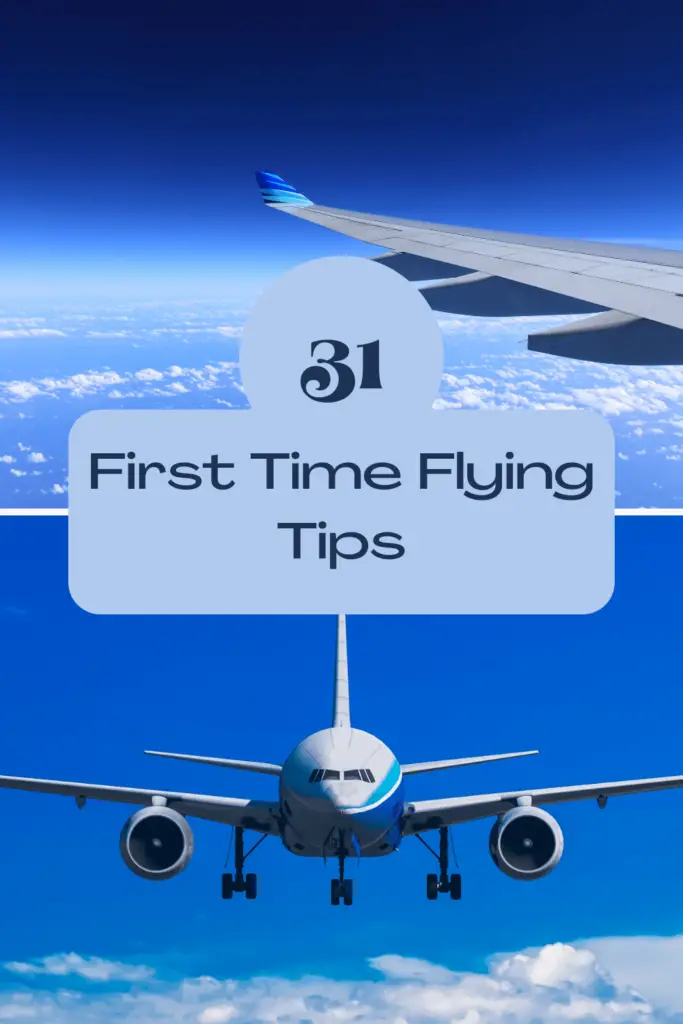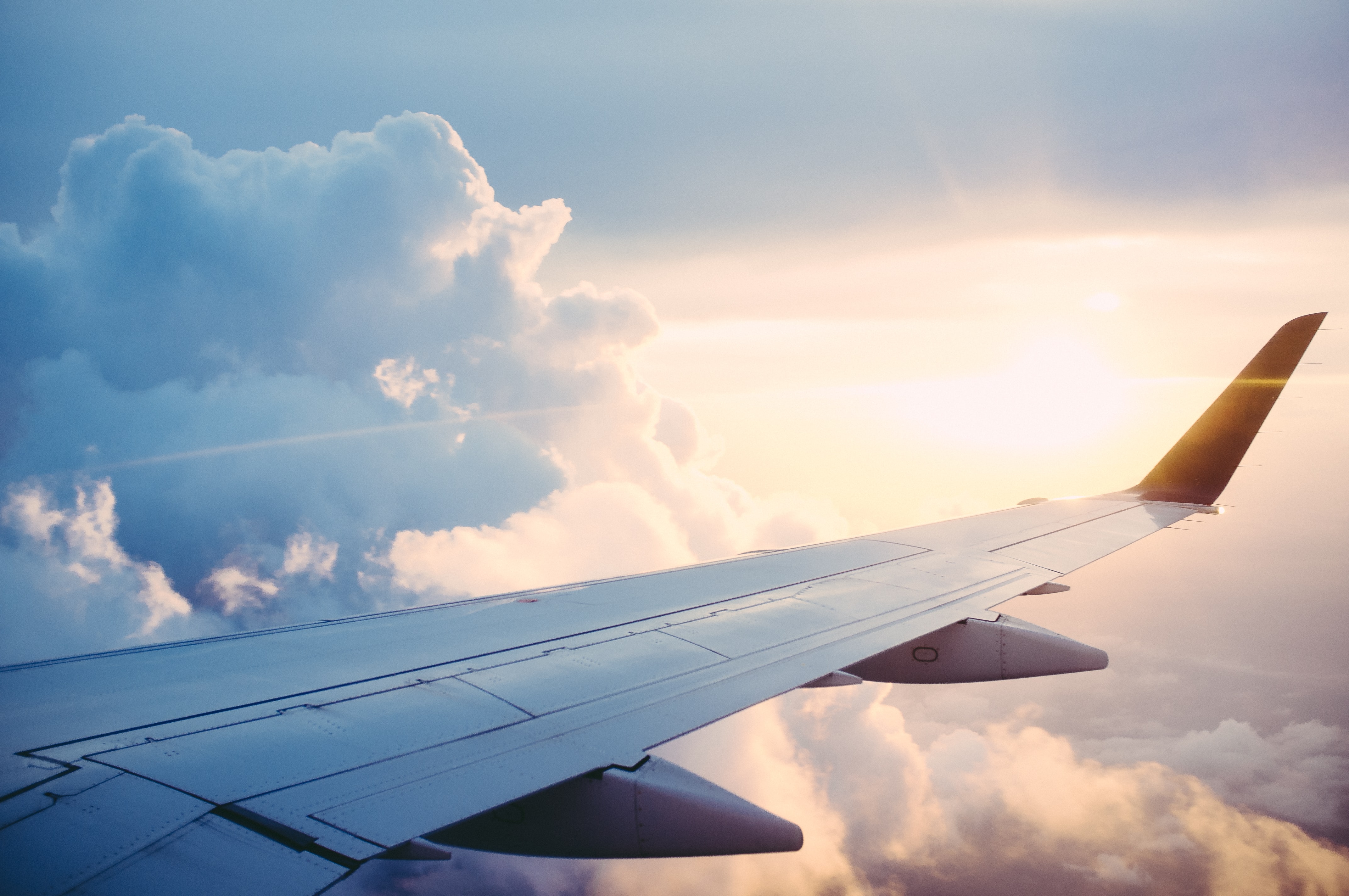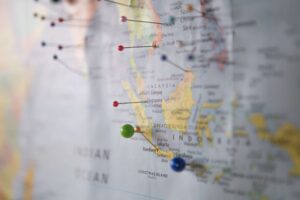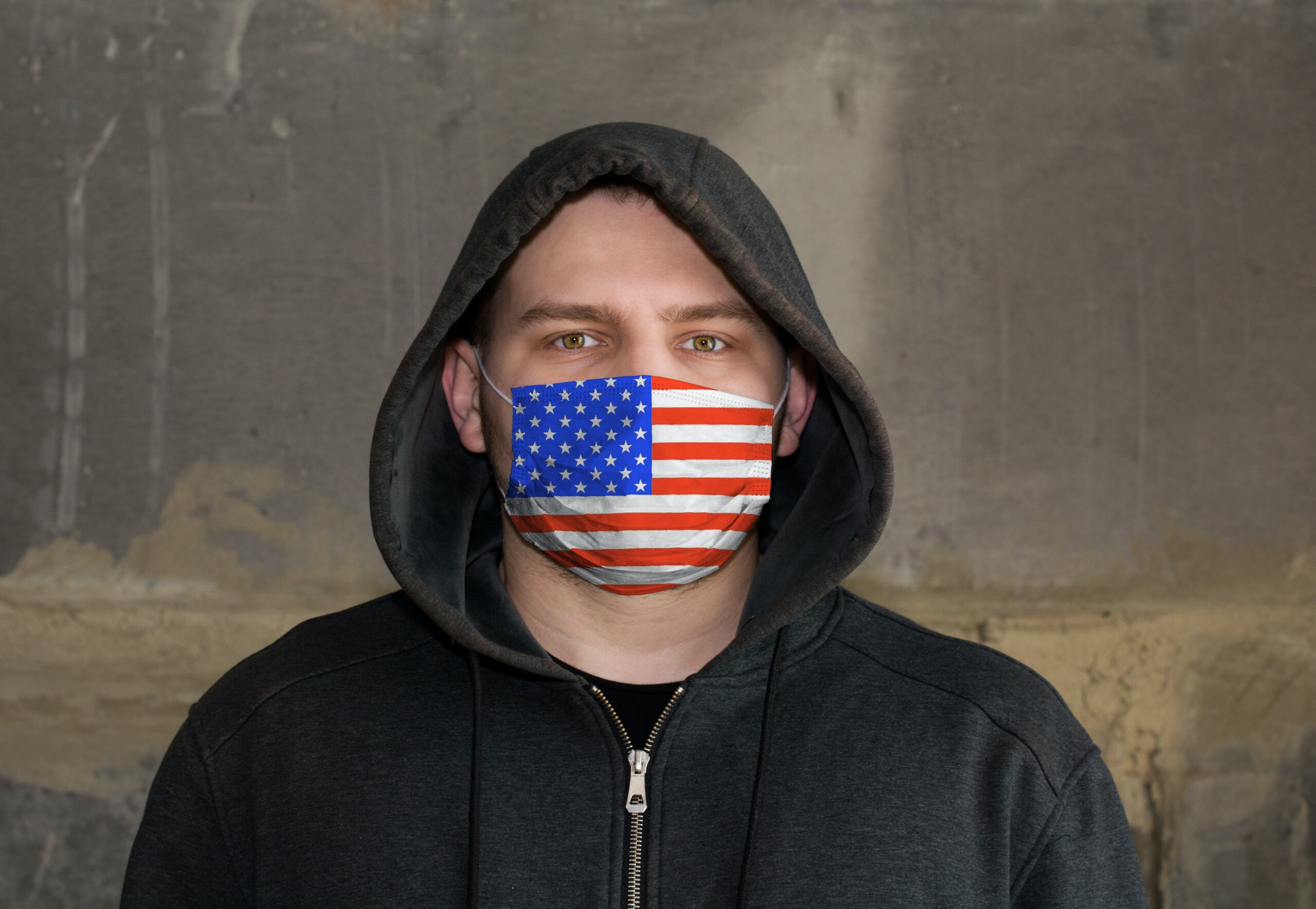Welcome! If you’re about to embark on your first-ever flight, congratulations! Air travel can be an exciting and rewarding experience, opening up a world of new possibilities.
It’s natural, however, to feel a little anxious or uncertain, especially if you’re unfamiliar with the ins and outs of flying.
In this comprehensive guide, we’ve gathered 31 invaluable first time flying tips to help make your journey as smooth, stress-free, and enjoyable as possible!
Some of the links in this post are affiliate links, which just means I earn a small commission at no extra cost to you!
Table of Contents
Our First Time Flying Tips
Planning Tips
1. Pack Light
We recommend weighing your checked luggage before leaving the house. Most airlines charge for any type of checked bag, and some airlines even charge for carry-on luggage.
It’s best to head over to the airline’s specific website to check the weight and size restrictions. When checking luggage, it’s very important to make sure you don’t exceed the weight restriction.
- Weigh your bag at home (or even while on vacation) using a luggage scale (we prefer digital)!!
- Tip: If your bag exceeds the weight limit, redistribute some of the items between your checked and carry-on luggage.
2. Check the TSA Guidelines
- Check the Transportation Security Administration (TSA) guidelines for what is allowed in your carry-on luggage.
- Know what you can check vs carry on the airplane
- Pack your carry-on with extra clothing, toiletries, and medications (in case luggage is lost)
- Know the liquid restrictions: all liquids must be packaged in a 3.4oz container inside a quart-sized bag.
Knowing the TSA guidelines will save you time and prevent any unnecessary hold-ups at security.
3. Avoid Black Luggage
We’ve found that more colorful bags are, not only unique, but easier to recognize and keep track of in the airport.
For bags that you plan on checking, traveling is much simpler when your bags aren’t easily confused with other similar looking luggage. And most checked bags, from our experience, seem to be a darker color.
Don’t own colorful luggage? There are some ways to make your black bag stand out!
- Try using a brightly colored luggage strap
- Tie a colored ribbon to the handle
4. Choose Your Seat Wisely
If you choose the wrong seat, your flight may not be as enjoyable. Deciding on a seat where you can catch beautiful scenic views or one where you can stretch your legs can have a huge impact on your trip.
- For a short flight: choose the window seat for the views!
- For a longer flight: choose an aisle seat for that extra leg room!
5. Research Your Airline’s Policies
Every airline has their own set of rules and policies regarding baggage fees, flight changes, and cancellations. Become familiar with these so you aren’t surprised at the airport by any unexpected expenses.
Here are some things (not an exhaustive list) that you can research beforehand:
- Baggage Allowance (Number of bags, size restrictions, baggage fees)
- Check-in options
- Boarding zones/processes
- Security guidelines by TSA
- Complimentary services provided by airline (meals, entertainment, Wi-Fi)
6. Consider Wearing Compression Socks
Compression socks are designed to improve circulation and reduce the risk of blood clots. This is done by applying gradual pressure to your legs and helping to move blood back up to your heart.
During a flight, the reduced air pressure and limited mobility can cause blood to pool in your legs, leading to swelling and discomfort. I’ve found that wearing compression socks (particularly on longer flights > 5 hours) makes a big difference in how my legs feel.
You most likely can find the compression socks you need online or at your local pharmacy. If you have any circulatory disorder, however, we recommend consulting with your doctor first!
7. Pack Valuables/Essentials in Carry-On Luggage
We always keep our passport, ID, travel documents, medicine, electronics, an extra pair of clothes, and any valuable items in our carry-on.
In case our checked baggage gets lost or delayed (which rarely happens, but you never know), having these essentials with us means we can still carry on without much hassle.
It’ll make your trip much more enjoyable!
8. Keep Your Passport, ID, and Boarding Pass Readily Accessible
It’s really important to keep your passport, ID, and boarding pass readily accessible to ensure a smooth check-in process.
Having these documents close by also allows for a quick response to unexpected situations and easy proof of identity and travel authorization.
I found these super cute passport holders that I carry with us whenever we travel! I love how they have a place to hold our COVID-19 vaccinations card as well.
9. Keep Track of Lost Luggage
Consider investing in an AirTag if loosing luggage is a fear of yours.
What is an AirTag?
- Small tracking device developed by Apple that you can attach to your luggage to keep track of its location
- The Find My app on your iPhone or iPad can be used to locate the AirTag on your luggage
- Lost Mode can be enabled in the Find My app, allowing you to see the last known location of your AirTag on a map and receive alerts when its location is updated
- If your lost luggage with AirTag is found, the AirTag can be scanned with an iPhone or NFC-enabled device to view your contact information
Airport Tips
10. Arrive Early
If it’s your first time flying, arriving early at the airport can help reduce any stress and anxiety. Unexpected delays, like long lines for check-in or security, can occur, so it’s wise to give yourself extra time to handle them without worrying about missing your flight.
- Arrive at least 1-2 hours before your scheduled departure time for domestic flights.
- Arrive 3 hours before your scheduled departure time for international flights.
- Airlines start boarding about 30 minutes before departure.
By arriving early, you’ll give yourself enough time to navigate the airport, find your gate, and get settled before boarding begins.
11. Check in Online
Checking in online before your first flight can help make the check-in process at the airport smoother and less stressful. When you check in online, you can usually select your seat and print your boarding pass ahead of time, which can save you time and hassle at the airport.
Typically, you can check in starting 24 hours before boarding time. Go to the specific airline’s website and follow the prompts. It will guide you through the process! To save time, check in online!
If you choose to check in online, you should still be early for your flight. You don’t want to risk missing your departure time!
12. Use the Restroom before Boarding
We strongly recommend that you use the restroom prior to boarding.
This is something that we do before all flights, even if we don’t have to go to the bathroom at that time. Since you’re going to want to stay hydrated on your flight, using the bathroom prior to boarding may help lessen the number of times you have to go in flight.
If your flight is short, you may be in luck and not even have to use the plane’s restroom.
If you do need to go on board, you won’t be able to use the restroom immediately. You’ll have to wait until the plane has taken off, leveled off, and the pilot has turned of the seat belt sign.
Money Saving Tips
13. Sign Up For Frequent Flyer Programs
Signing up for frequent flyer programs is a great idea, especially since it’s usually a free perk!
Frequent Flyer Program Perks:
- Earn points or miles for flights and redeem them for free travel or upgrades
- Priority services
- Access to airport lounges
- Special promotions
If you’re a loyal customer, you can quickly earn points or miles towards your next flight. If you tend to price shop, it’ll take a bit longer to redeem points for any travel upgrades.
14. Book Flights in Advance
The earlier you book your flights, the cheaper they tend to be. We also like to book our trips earlier so we can secure our preferred travel dates and destinations.
While we book our trips over a year in advance, we recommend booking any domestic flight 2-3 months in advance and any international trips 6 months in advance to get the best deals.
15. Use Price Comparison Websites
When we’re looking for the best deals on flights, hotels, and other travel services, we find using price comparison websites extremely helpful.
These websites gather information from different airlines, hotels, and travel agencies, making it easy for us to compare prices and find the most affordable options. It saves us a lot of time and effort, as we can quickly see the prices from multiple sources all in one place!
They also offer additional features like flexible date searches and fare alerts, which are really useful when we’re trying to find the best deals.
Price Comparison Websites To Try:
16. Fly Budget Airlines
Opting to fly with budget airlines, such as JetBlue, Southwest, or Spirit Airlines can be a smart choice if you’re looking to save money.
Pros
- More affordable ticket prices
- Customizable ticket options
Cons
- Fewer in-flight amenities
- Reduced legroom
- Stricter baggage allowance
- Additional fees may apply for services like seat selection or checked baggage
For short flights, flying budget airlines may be a good choice. For longer trips, you may want to opt for an airline that offers some more amenities and better leg room.
17. Pack Snacks
Bringing your own snacks on board a plane can help you save money, ensure that you have access to food that you like, and make your flight more comfortable and enjoyable.
Depending on the airline and the length of your flight, options for in-flight meals and snacks can be limited. Airline food is also not the healthiest. The food can be high in salt, sugar, and preservatives.
Lastly, food in the airport and in-flight can be pricey. If you’re looking for a budget-friendly travel tip, we recommend packing your own snacks and not purchasing the over priced airport food.
In-flight Snack Options:
- Granola bars
- Dried fruit
- Food without nuts (Passengers on-board may have a nut allergy)
18. Use a Travel Rewards Credit Card
When you use a travel rewards credit card for your flight purchases, you can earn points, miles, or cash back that can be redeemed for various travel-related expenses. By using the card for everyday expenses and paying off the balance in full each month, you can accumulate rewards quickly.
Before choosing a travel rewards credit card, compare the available options and consider factors such as annual fees, interest rates, rewards programs, and any additional perks offered.
Look for cards that align with your travel preferences and offer rewards that are valuable to you.
19. Use Points to Pay for Your Flight
Many airlines and credit card companies offer reward programs that allow you to accumulate points or miles based on your spending or travel activities. These points can then be redeemed to cover the cost of your flight.
Before booking your flight, check if you have any accumulated points or miles that can be used towards the ticket price. Most airlines have loyalty programs that offer various benefits, including the ability to use points for flights. You can also explore credit cards that offer travel rewards and sign-up bonuses, which can help you earn points more quickly.
Using points to pay for your flight can save you a significant amount of money, especially if you’ve been accumulating points over time.
Entertainment Tips
20. Bring a Book or E-Reader
Bringing a book or e-reader on your flight is a good way to keep yourself entertained and makes time go by faster. It’s also a great way to take your mind off of any nervousness you might feel about flying.
If you forget your favorite novel, you can probably buy a magazine or book from one of the shops in the airport (unless you’re flying at odd hours).
If you’re looking to save money, bringing your own book is the way to go!
21. Download Movies and/or TV Shows Before Your Flight
Many airlines offer in-flight entertainment, but it’s always a good idea to have backup entertainment options.
Before your trip, use streaming platforms like Netflix, Amazon Prime Video, or Disney+ to download your favorite movies or TV shows onto your device. This way, you won’t have to rely on an internet connection or the in-flight entertainment system to enjoy your preferred content.
Remember to charge your device fully before the flight and bring any necessary chargers or power banks to keep your device powered throughout the journey!
22. Listen to Music or Podcasts
Before your flight, create a playlist of your favorite songs or podcasts that you’ve been wanting to listen to. Music can be uplifting and help relax your mind, while podcasts can be informative or entertaining.
Using your own headphones, you can escape into the world of music or immerse yourself in interesting podcast episodes.
It’s a great way to engage yourself during the flight and distract from any nervousness or anxiety you may have about flying.
23. Bring Your Own Headphones
Most airlines provide headphones for in-flight entertainment, but they may not be the most comfortable or have the best sound quality. By bringing your own headphones, you can enjoy your favorite music, movies, or shows with better sound clarity and a more personalized experience.
If possible, I recommend using over-ear or noise-canceling headphones. They can help block out the noise of the aircraft and create a more immersive and enjoyable audio experience. If you prefer earbuds, make sure they fit well and provide good sound quality.
- Be prepared for the two-pin socket utilized by most aircrafts. For this reason, you’ll probably need to invest in a converter if you plan to using your own headphones with the aircraft’s inflight entertainment system.
Relaxation Tips
24. Avoid Ear Pain
The change in air pressure can cause pressure to build up in the ears, resulting in discomfort or even pain.
Ways to relieve ear discomfort:
- Chewing gum or sucking on hard candy can really help.
- Yawn or swallow frequently during takeoff and landing to keep the Eustachian tubes open and release the pressure
- Valsalva maneuver: Pinch your nostrils and gently blow air through your nose
- Earplugs designed for flying that can help regulate the air pressure in your ears
- Stay hydrated to prevent dryness and ear discomfort
25. Combat Anxiety
If you’re feeling anxious about flying, you’re not alone! Do some relaxation exercises before flying to help yourself feel calmer.
- Deep breathing
- Visualization exercises as a form of meditation
- Distraction techniques – reading a book, listening to music, watching a moving during the flight
If your anxiety is more severe, you may want to consider talking to your doctor or a mental health professional about therapy and/or medication options.
26. Know The Trick to Jet Lag
Jet lag occurs when you quickly travel to a new time zone, causing fatigue and insomnia. Nothing is worse than getting to your destination and being completely exhausted.
When traveling to new time zones, our internal clocks get mixed up, partially due to a difference in the exposure of light. One way to alleviate this is by getting outside soon after flying.
Exposure to daylight reduces melatonin that is produced, a natural hormone that makes you sleepy when released. By effecting the release of melatonin, sunlight exposure can help you stick to the schedule in your new time zone.
There are also melatonin products that you can help to help you sleep if you’re struggling to do so.
Also, it’s important to stay hydrated. Dehydration can make jet lag worse!
27. Dress Comfortably
It’s very rare that I “dress to impress” when flying. Wearing comfortable clothing and shoes can greatly enhance your travel experience.
- Wear loose-fitting clothing so you can easily move around and get comfortable on the plane
- Wear comfortable shoes! You’ll need a pair of shoes that can easily be taken on and off to go through security, but you should also be prepared to walk long distances through the airport
- And layer! The temperature on airplanes always vary. Be sure to carry a lightweight jacket in case you’re cold.
28. Stay Hydrated
Airplanes can be dehydrating, so be sure to drink plenty of water before, during, and after your flight. Whenever we fly, I like to bring an empty water bottle with me. Once we get through the security line, I can fill up my bottle at the next water fountain.
Not only will this save you money in the airport, but it will also come in handy when cruising and just traveling in general. I’ve trialed several types of water bottles and have found ones that are lighter weight, can be clipped or attached, and portable the most convenient for vacations. I even found one that is collapsible and will easily fit inside of book bags and purses!
Travel tip: Bring an empty water bottle to fill up once you pass security.
29. Listen to the Safety Briefing
Listening to the safety briefing on the airplane can help calm your nerves during a flight, especially if this is your first time flying!
When the flight attendants begin the briefing, make a conscious effort to pay attention and follow along. They will provide important information about the safety features of the aircraft and the procedures to follow in case of an emergency.
By familiarizing yourself with these details, you’ll gain a better understanding of the safety measures in place, which can help alleviate any anxiety or fear you may have.
30. Use a Calming App
If you’re flying for the first time and are experiencing some anxiety, you can try downloading a calming app to your phone to promote relaxation. The apps offer guided meditations, soothing sounds, and/or breathing exercises that are designed specifically for stress reduction.
Some apps you can download are:
- Valk
- Flying with Claustrophobia
- SkyGuru
- Tubcast
- SOAR
- Calm
31. Bring a Neck Pillow and Blanket
There’s nothing worse than being cold or uncomfortable on a flight. A good idea is to bring some versatile pieces, like a sarong, that can be used as a blanket and re-worn outdoors.
An extra pair of socks is also nice to have. In addition to the compression socks, why not bring some big and fluffy socks to keep your toes warm?! This is especially helpful on those really long flights!
We hope these first time flying tips will relieve any anxiety and nervous energy you may be experiencing. Have fun and safe travels!
Pin this Post!

And please do me a little favor and share this article with others, for there’s a good chance that it will help them with their travels!
First Time Flying Tips FAQ’s
What must you do 30 minutes before a flight?
Before a flight, there are important tasks to complete around 30 minutes prior to departure. Check-in, go through security, keep your boarding pass and ID accessible, arrive at the boarding gate, inquire about seat availability, prepare your carry-on items, and stay updated on any announcements.
Arriving early and allowing extra time is crucial for a smooth travel experience.
Do I really need to arrive 2 hours before a flight?
The recommended arrival time before a flight is generally at least 1-2 hours before the scheduled departure time. While it may not always be necessary to arrive a full 2 hours before, it’s still important to allow enough time for check-in, security screening, and potential unforeseen circumstances.
Do I need to print my boarding pass?
Printing your boarding pass is not always necessary. Many airlines now offer electronic boarding passes, which can be accessed and displayed on your smartphone or mobile device. These electronic boarding passes usually include a barcode or QR code that can be scanned at various checkpoints throughout your journey, including security and boarding gates.




